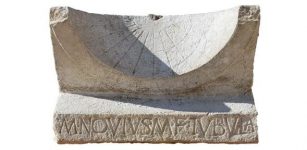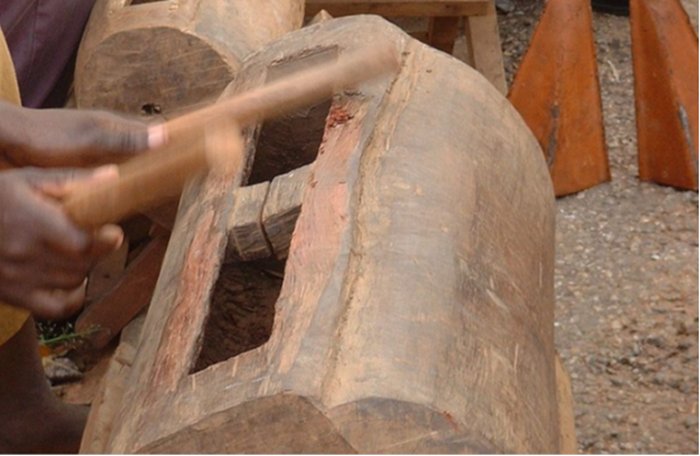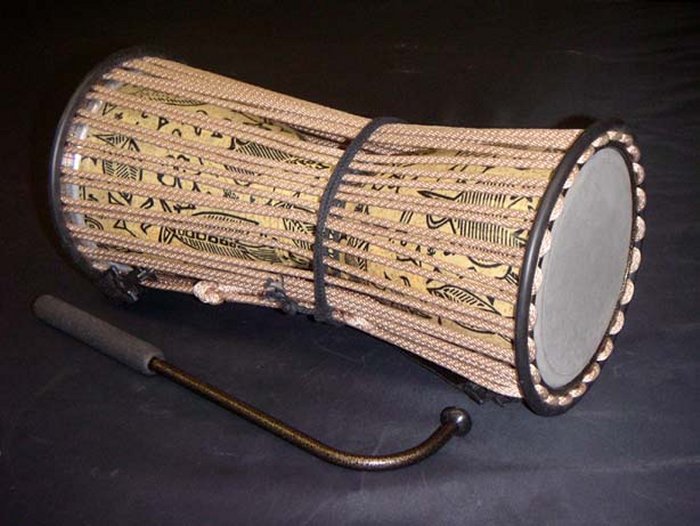Ancient Ingenious Ideas Of Transmitting Messages Over Long Distances
A. Sutherland - AncientPages.com - The need for people to communicate at a distance has a very long tradition, and one can say it is as old as humanity itself.
Without telegraphs and wireless communication, our ancestors quickly learned that giving information to others is often necessary.
Usually, using one's own voice is enough, especially at very small distances, but other means of communication are required over long distances.
What Did Ancient People Come Up With?
Our ancestors were resourceful and found their own ways to spread important messages. Horns, trumpets, and drums were used to communicate. These instruments are still used by some tribes in Africa, Papua in New Guinea, and by Indians of South America.
Additionally, drums and trumpets were used for signaling in the army; Roman soldiers used them to give orders. The bells were of great importance because they warned of an imminent threat or another danger on the way.
For many centuries, important messages have been often transmitted from one village to another and over large distances.
Drum Telegraphy Is Still An Effective Means
A distance of 566 miles can be covered in only a few hours. In Africa, New Guinea, and America's tropical regions, people have used drum telegraphy to communicate with each other from far away for centuries.

Painting by Frederic Remington showing Native Americans generating a smoke signal; Amon Carter Museum, Fort Worth. Image via Wikipedia
When European expeditions came into the jungles to explore the local forest, they were surprised to find that the message of their coming was carried through long distances a step in advance of their arrival. An African message can easily arrive at the speed of 100 miles within an hour.
An important role was played by the bells that warned of the imminent threat. The oldest of them originated from China.
Talking Drums And Smoke Signals
In the first human societies, people used special drum beats to send warnings or important information. The talking drum from West Africa has been used for a long time while other people like the Achaeans, the inhabitants of Achaea in Greece, had another non-verbal way of transferring information, namely, fire and smoke signaling.
They invented a fire telegraph that served efficiently to confirm or negate a previously agreed message. Thus, they were the first to use fire to send news at a distance.
In countries with mountainous areas, messages were relayed by torches lit on hilltops or beacons. However, these messages were extremely short and contained vital information like for example, warnings or announcements about victory.
Homing Pigeons And Fire Signals
Among the oldest and efficient ideas for transmitting messages over long distances were pigeons that carried messages on the learned route. Also, the use of signal fires, used by the Chinese along the Great Wall of China, is a very old method of communication over distances.
Around 150 BC, the Romans built the so-called telegraphic network but not literally the same we possess today. It consisted of hundreds of guard towers, which were located at the borders of the Empire. In their vicinity bonfires were lit as soon as possible to inform and warn the crew about the dangers.
Such a way of communication was also known to Native Americans in North America. During hunting and war expeditions, the language of signs served as a means of communication at a distance. Fire, smoke or flickering signals were used using a mirror and it could have been a warning alert or a friendly greeting.
Other Effective Means Of Communication Used By The Ancients
The primitive peoples used other signaling instruments, horns, and trumpets. The horns were used in ancient Mesopotamia, Egypt, Israel, Greece, Rome in southern and western Africa. Shepherds used them in Scandinavia, the Balkans, Spain, and Sudan.
A well-organized pedestrian system of transmitting messages existed in the Inca Empire. The chasquis (also chaskis) were the messengers of the Empire. They were highly trained and physically fit. They were in charge of carrying the quipus, messages, and gifts up to 240 km per day through the chasquis relay system. Chasquis were not just messengers; they were also trained to read and translate the quipus to each other and higher authorities.
Not only were they used to transport oral messages, but they also assisted the Sapa Inka's brother, keeping track of the people in the Empire.
Written by – A. Sutherland - AncientPages.com Senior Staff Writer
Copyright © AncientPages.com All rights reserved. This material may not be published, broadcast, rewritten or redistributed in whole or part without the express written permission of AncientPages.com
More From Ancient Pages
-
 Humans In Africa Fled To The Mountains During The Last Ice Age
Archaeology | Aug 9, 2019
Humans In Africa Fled To The Mountains During The Last Ice Age
Archaeology | Aug 9, 2019 -
 Canaanite Wine Palace At Tel Kabri May Have Been Destroyed By Earthquake
Archaeology | Sep 15, 2020
Canaanite Wine Palace At Tel Kabri May Have Been Destroyed By Earthquake
Archaeology | Sep 15, 2020 -
 Mystery Of The Ancient Unknown Mining Civilization In North America – Connecting the Dots – Part 2
Ancient Mysteries | Apr 23, 2022
Mystery Of The Ancient Unknown Mining Civilization In North America – Connecting the Dots – Part 2
Ancient Mysteries | Apr 23, 2022 -
 Remarkable Discovery Of A 19th-Century Boat Buried Under A Road In St. Augustine, Florida
Archaeology | Oct 16, 2023
Remarkable Discovery Of A 19th-Century Boat Buried Under A Road In St. Augustine, Florida
Archaeology | Oct 16, 2023 -
 Sobek: A 2,500-Year-Old Mummified Nile Crocodile – On Display At The British Museum
Archaeology | Dec 9, 2015
Sobek: A 2,500-Year-Old Mummified Nile Crocodile – On Display At The British Museum
Archaeology | Dec 9, 2015 -
 Remnants Of A Royal Rest House That Served As A Temporary Residence For Pharaoh Thutmose III
Archaeology | May 9, 2024
Remnants Of A Royal Rest House That Served As A Temporary Residence For Pharaoh Thutmose III
Archaeology | May 9, 2024 -
 Rare 2,000-Year-Old Intact Sundial With Inscription Discovered In Italy
Archaeology | Nov 9, 2017
Rare 2,000-Year-Old Intact Sundial With Inscription Discovered In Italy
Archaeology | Nov 9, 2017 -
 On This Day In History: Historical Scandal Took Place In France – On July 31, 1451
News | Jul 31, 2016
On This Day In History: Historical Scandal Took Place In France – On July 31, 1451
News | Jul 31, 2016 -
 Earliest Evidence Of Evolutionary Trait That Enabled Dinosaurs To Become Giants – Brazilian Fossil Reveals
Evolution | Jun 21, 2023
Earliest Evidence Of Evolutionary Trait That Enabled Dinosaurs To Become Giants – Brazilian Fossil Reveals
Evolution | Jun 21, 2023 -
 Strange Encounter With A Supernatural Being In The 1790s
Ancient Mysteries | Jan 12, 2020
Strange Encounter With A Supernatural Being In The 1790s
Ancient Mysteries | Jan 12, 2020 -
 Extraordinary Discovery Of First Viking Tower In Viborg, Denmark Re-Writes Viking History
Archaeology | Jan 30, 2017
Extraordinary Discovery Of First Viking Tower In Viborg, Denmark Re-Writes Viking History
Archaeology | Jan 30, 2017 -
 Researchers Find Oldest Evidence Of Human-Caused Lead Contamination In Aegean Region
Archaeology | Feb 4, 2025
Researchers Find Oldest Evidence Of Human-Caused Lead Contamination In Aegean Region
Archaeology | Feb 4, 2025 -
 Reconstructed – Incredibly Well-Preserved 1,700-Year-Old Lendbreen Tunic – Norway’s Oldest Piece Of Clothing
Archaeology | Feb 21, 2018
Reconstructed – Incredibly Well-Preserved 1,700-Year-Old Lendbreen Tunic – Norway’s Oldest Piece Of Clothing
Archaeology | Feb 21, 2018 -
 Anglo-Irish Explorer Shackleton’s Ship The Quest Found Off Canada’s Coast
Underwater Discoveries | Jun 13, 2024
Anglo-Irish Explorer Shackleton’s Ship The Quest Found Off Canada’s Coast
Underwater Discoveries | Jun 13, 2024 -
 Mysterious People Who Appeared Out Of Nowhere
Featured Stories | Sep 1, 2018
Mysterious People Who Appeared Out Of Nowhere
Featured Stories | Sep 1, 2018 -
 The First Australians Ate Giant Eggs Of Huge Flightless Birds That Went Excinct Over 47,000 Years Ago
Archaeology | May 25, 2022
The First Australians Ate Giant Eggs Of Huge Flightless Birds That Went Excinct Over 47,000 Years Ago
Archaeology | May 25, 2022 -
 Unknown Saxon Village And Bronze Age Artifacts Found Near Ely, Cambridgeshire
Archaeology | Sep 18, 2023
Unknown Saxon Village And Bronze Age Artifacts Found Near Ely, Cambridgeshire
Archaeology | Sep 18, 2023 -
 Our Ancestors Collected Shells 100,000 Years Ago To Create Personal Identity
Archaeology | Oct 6, 2023
Our Ancestors Collected Shells 100,000 Years Ago To Create Personal Identity
Archaeology | Oct 6, 2023 -
 Pyla-Koutsopetria: Complexity Of Ancient Fortifications Of Pyla-Vigla, Cyprus – Explored
Archaeology | Oct 15, 2019
Pyla-Koutsopetria: Complexity Of Ancient Fortifications Of Pyla-Vigla, Cyprus – Explored
Archaeology | Oct 15, 2019 -
 Megalith Tombs Were Family Graves In Stone Age Europe
Archaeology | Apr 15, 2019
Megalith Tombs Were Family Graves In Stone Age Europe
Archaeology | Apr 15, 2019


